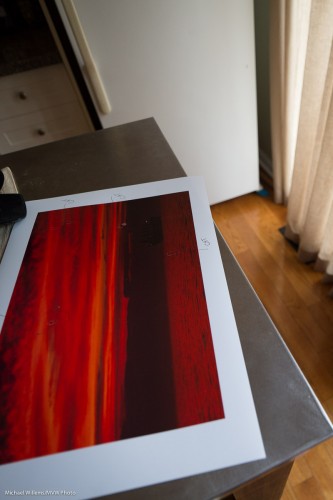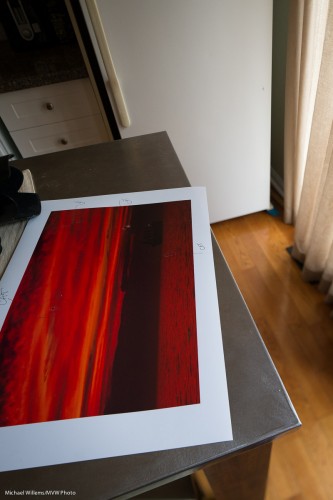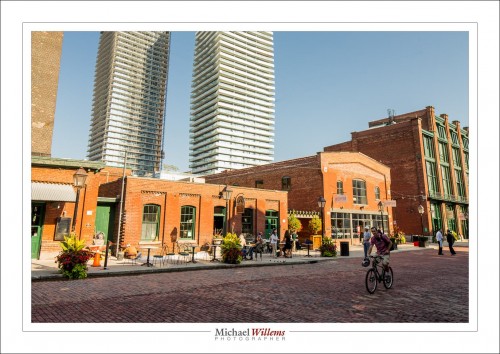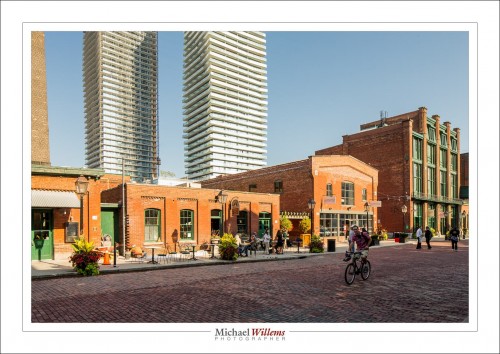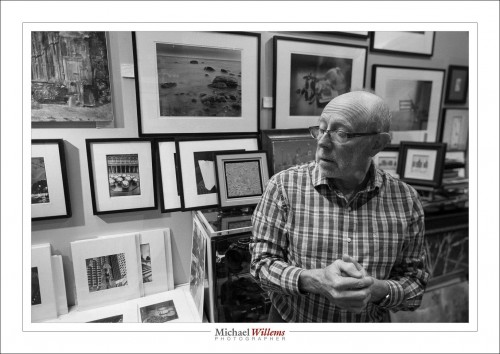A repeat for those new to this blog: one of the coolest lenses you can try is the tilt-shift lens. It basically turns your camera into a view camera, where the lens element can tilt and shift with respect to the film, or in our case, sensor.
This picture, at f/3.5, shows only the back of the print in focus:
To get the entire picture into focus I guess I could stop down the lens, or move back. But with a tilt-shift I can avoid this: I can just tilt (=angle) the lens down, and I get:
Now the front of the print is sharp, but so are the drawers and fridge in the background; while the curtain is still blurred. I tilted the focal plane to where I wanted it; not just perpendicular to the lens direction (and parallel to the sensor).
Shifting (up-down) allows me to correct for perspective. When I shoot this, aiming the camera up, I get things converging at the top:
Keep the camera parallel to the ground, and shift the lens up, and I get this, straight out of camera, no Lightrooming needed):
(Those were done with the Canon 24mm TS-E f/3.5L lens I have for a few days from GTAlensrentals.com. I own the 45mm TS-E f/2.8 lens, but the wider one is nice for architecture).
Of course you need to expose manually and focus manually with a tilt-shift lens. But that is easy, and a small price to pay, so I have a tilt-shift on my camera rather often. Like the other day in Toronto’s historic Distillery District, above. Here’s Gregory Talas, owner of The Kodiak Gallery in The Distillery, which held several of my exhibits, and still has a few of my pieces on display.
There’s a lot of specialty lenses, like Macro lenses, fish-eyes, and so on, but the tilt-shift is a special specialty lens worth playing with, especially if you have never operated a tilt-shift camera.

